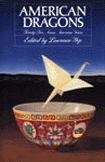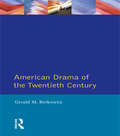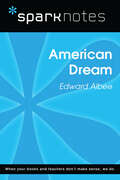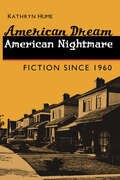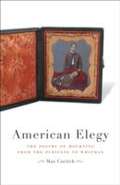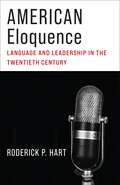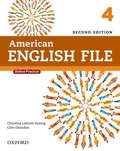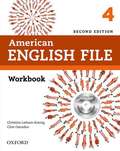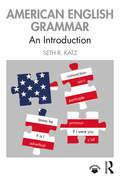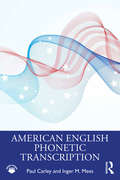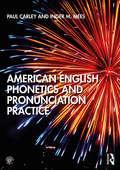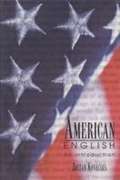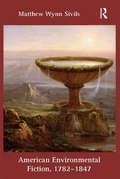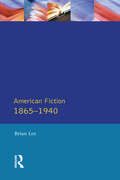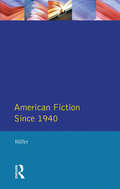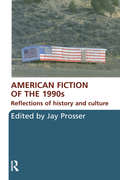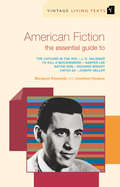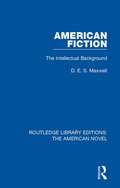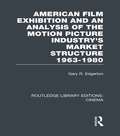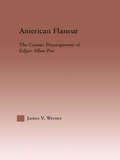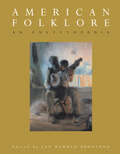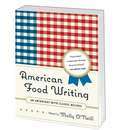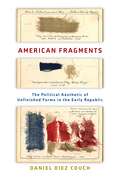- Table View
- List View
American Deadline: Reporting from Four News-Starved Towns in the Trump Era (Columbia Journalism Review Books)
by Charles Richardson Greg Glassner Sandra Sanchez Jason TogyerThe dramatic events of 2020—the presidential election, the COVID-19 pandemic, protests for racial justice—affected every corner of American life. What did these events mean for the residents of small towns and cities that are often overlooked by national newspapers? How do local stories change when they are told by journalists with roots in these communities? And what is lost as this kind of coverage disappears?American Deadline brings together dispatches from four longtime local journalists in different parts of the United States that tell the story of 2020 anew. It shares reporting from Bowling Green, Virginia; Macon, Georgia; McKeesport, Pennsylvania; and McAllen, Texas—two towns that lost their local newspapers and two where they are barely hanging on. The authors consider what makes each town distinctive and how these local perspectives tell a part of a broader American story. This book reports on how residents of these towns grapple with and talk about issues relating to race, schooling, health, immigration, deindustrialization, as well as local and national politics amid a changing and increasingly precarious information ecosystem. A distinct and intimate look at a calamitous year, American Deadline is an important book for all readers interested in the possibilities and future of local journalism.
American Dragons: Twenty-Five Asian American Voices
by Laurence YepA collection of writings by 25 Asian-Americans.
American Drama of the Twentieth Century (Longman Literature In English Series)
by Gerald M. BerkowitzIn this book Professor Berkowitz studies the diversity of American drama from the stylistic, experimental plays of O'Neill, through verse, tragedy and community theatre, to the theatre of the 1990s. The discussions range through dramatists, plays, genres and themes, with full supporting appendix material. It also examines major dramatists such as Eugene O'Neill, Arthur Miller, Sam Shephard, Tennessee Williams and August Wilson and covers not only the Broadway scene but also off Broadway movements and fringe theatres and such subjects as women's and African-American drama.
American Dream (SparkNotes Literature Guide Series)
by SparkNotesAmerican Dream (SparkNotes Literature Guide) by Edward Albee Making the reading experience fun! Created by Harvard students for students everywhere, SparkNotes is a new breed of study guide: smarter, better, faster.Geared to what today's students need to know, SparkNotes provides:*chapter-by-chapter analysis *explanations of key themes, motifs, and symbols *a review quiz and essay topics Lively and accessible, these guides are perfect for late-night studying and writing papers.
American Dream, American Nightmare: Fiction since 1960
by Kathryn HumeIn this celebration of contemporary American fiction, Kathryn Hume explores how estrangement from America has shaped the fiction of a literary generation, which she calls the Generation of the Lost Dream. In breaking down the divisions among standard categories of race, religion, ethnicity, and gender, Hume identifies shared core concerns, values, and techniques among seemingly disparate and unconnected writers including T. Coraghessan Boyle, Ralph Ellison, Russell Banks, Gloria Naylor, Tim O'Brien, Maxine Hong Kingston, Walker Percy, N. Scott Momaday, John Updike, Toni Morrison, William Kennedy, Julia Alvarez, Thomas Pynchon, Leslie Marmon Silko, and Don DeLillo. Hume explores fictional treatments of the slippage in the immigrant experience between America's promise and its reality. She exposes the political link between contemporary stories of lost innocence and liberalism's inadequacies. She also invites us to look at the literary challenge to scientific materialism in various searches for a spiritual dimension in life. The expansive future promised by the American Dream has been replaced, Hume finds, by a sense of tarnished morality and a melancholy loss of faith in America's exceptionalism. American Dream, American Nightmare examines the differing critiques of America embedded in nearly a hundred novels and points to the source for recovery that appeals to many of the authors.
American Elegy: The Poetry of Mourning from the Puritans to Whitman
by Max CavitchPracticed and read form of verse in America, "elegies are poems about being left behind," writes Max Cavitch. American Elegy is the history of a diverse people's poetic experience of mourning and of mortality's profound challenge to creative living.
American Eloquence: Language and Leadership in the Twentieth Century
by Roderick P. HartWhat makes political speech powerful? How does eloquent rhetoric transcend ordinary language? Which stylistic choices allow effective orators to stir emotions and spur action? And in the age of Donald Trump, does political eloquence still matter?This book examines a wide swath of political discourse to shed new light on the meaning and significance of eloquence. Roderick P. Hart, a leading scholar of political communication, develops new ways of measuring persuasiveness and rhetorical power through the use of computer-based methods. He examines one hundred of the most important speeches of the twentieth century, given by presidents and politicians as well as leaders, activists, and cultural figures including Martin Luther King Jr., Lou Gehrig, Mario Savio, Carrie Chapman Catt, and Stokely Carmichael.Deploying the tools of the digital humanities as well as critical rhetorical analysis, Hart considers what distinguishes the linguistic properties of iconic oratory from those of more mundane texts. He argues that eloquence represents the confluence of cultural resonance, personal investment, and poetic imagination, providing empirical metrics for assessing each of these qualities. A quantitative and qualitative exploration of American political speech, this interdisciplinary book offers a powerful argument for why eloquence is essential for a functioning democracy.
American English File With Online Practice: Level 4
by Christina Latham-Koenig Clive Oxenden Paul SeligsonFour-skills American English course with a communicative methodology, engaging texts, and a strong pronunciation syllabus - designed to get students speaking. With texts and topics that make learners want to speak, American English File is the course that gets students talking. It gives you full skills coverage with a clear focus on pronunciation, plus wide-ranging support and resources too. Resources include Test Generator CD-ROMs, DVDs, Multi-ROMs, and websites. The highly popular teacher's site has extra lesson ideas and resources for you to download.
American English File Workbook
by Christina Latham-Koenig Clive Oxenden Jane HudsonFour-skills American English course with a communicative methodology, engaging texts, and a strong pronunciation syllabus - designed to get students speaking. With texts and topics that make learners want to speak, American English File is the course that gets students talking. It gives you full skills coverage with a clear focus on pronunciation, plus wide-ranging support and resources too.
American English Grammar: An Introduction
by Seth R. KatzAmerican English Grammar introduces students to American English in detail, from parts of speech, phrases, and clauses to punctuation and explaining (and debunking) numerous "rules of correctness," integrating its discussion of Standard American grammar with thorough coverage of the past sixty years’ worth of work on African American English and other ethnic and regional non-Standard varieties. The book’s examples and exercises include 500 real-world sentences and longer texts, drawn from newspapers, film, song lyrics, and online media as well as from Mark Twain, Stephen King, academic texts, translations of the Bible, poetry, drama, children’s literature, and transcribed conversation and TV and radio shows. Based on twenty years of classroom testing and revision, American English Grammar will serve as a classroom text or reference that teaches students how to think and talk not only about the mechanics of sentences but also about the deep and detailed soul and nuance of the most widely used language in human history.
American English Phonetic Transcription
by Inger M. Mees Paul CarleyAmerican English Phonetic Transcription provides an accessible introduction to phonemic, phonetic, and intonational transcription with a focus on American English. Featuring exercises, revision tasks, and recordings to help students gain hands-on practice, the book takes a learning-by-doing approach and ensures students gain practice using each new symbol or concept introduced before moving on to the next. Consisting of three parts, the book covers: transcribing individual words, including consonants, vowels, primary stress, secondary stress, syllabic consonants, and inflections; transcribing phrases and sentences, including weak forms, elision, and assimilation; transcribing intonation, including the structure of English intonation and recognizing pitch patterns. Ideally suited as a standalone workbook or for use alongside British English Phonetic Transcription, American English Phonetic Transcription is key reading for undergraduate students of linguistics as well as anyone teaching or learning English as a foreign language.
American English Phonetics and Pronunciation Practice
by Paul Carley Inger MeesAmerican English Phonetics and Pronunciation Practice provides an accessible introduction to basic articulatory phonetics for students of American English. Built around an extensive collection of practice materials, this book teaches the pronunciation of modern standard American English to intermediate and advanced learners worldwide. This book: • provides an up-to-date description of the pronunciation of modern American English; • demonstrates the use of each English phoneme with a selection of high-frequency words, both alone and in context in sentences, idiomatic phrases and dialogues; • provides examples and practice material on commonly confused sounds, including illustrative pronunciation diagrams; • is supported by a companion website featuring complete audio recordings of practice material to check your pronunciation against; • can be used not only for studying pronunciation in the classroom but also for independent practice. American English Phonetics and Pronunciation Practice is essential reading for any student studying this topic.
American English: An Introduction
by Zoltán Kövecses<P> This book is a cultural-historical (rather than purely linguistic) introduction to American English. The first part consists of a general account of variation in American English. It offers concise but comprehensive coverage of such topics as the history of American English; regional, social and ethnic variation; variation in style (including slang); and British and American differences. <P>The second part of the book puts forward an account of how American English has developed into a dominant variety of the English language. It focuses on the ways in which intellectual traditions such as puritanism and republicanism, in shaping the American world view, have also contributed to the distinctiveness of American English.
American English: Dialects and Variation (Language in Society #45)
by Natalie Schilling Walt WolframThe new edition of this classic text chronicles recent breakthrough developments in the field of American English, covering regional, ethnic, and gender-based differences. Now accompanied by a companion website with an extensive array of sound files, video clips, and other online materials to enhance and illustrate discussions in the text Features brand new chapters that cover the very latest topics, such as Levels of Dialect, Regional Varieties of English, Gender and Language Variation, The Application of Dialect Study, and Dialect Awareness: Extending Application, as well as new exercises with online answers Updated to contain dialect samples from a wider array of US regions Written for students taking courses in dialect studies, variationist sociolinguistics, and linguistic anthropology, and requires no pre-knowledge of linguistics Includes a glossary and extensive appendix of the pronunciation, grammatical, and lexical features of American English dialects
American Environmental Fiction, 1782-1847
by Matthew Wynn SivilsWhile Ralph Waldo Emerson and Henry David Thoreau are often credited with inventing American environmental writing, Matthew Wynn Sivils argues that the works of these Transcendentalists must be placed within a larger literary tradition that has its origins in early Republic natural histories, Indian captivity narratives, Gothic novels, and juvenile literature. Authors such as William Bartram, Ann Eliza Bleecker, and Samuel Griswold Goodrich, to name just a few, enabled the development of a credibly American brand of proto-environmental fiction. Sivils argues that these seeds of environmental literature would come to fruition in James Fenimore Cooper’s The Pioneers, which he argues is the first uniquely environmental American novel. He then connects the biogeographical politics of Cooper’s The Prairie with European anti-Americanism; and concludes this study by examining how James Kirke Paulding, Thomas Cole, and James Fenimore Cooper imaginatively addressed the problem of human culpability and nationalistic cohesiveness in the face of natural disasters. With their focus on the character and implications of the imagined American landscape, these key works of early environmental thought contributed to the growing influence of the natural environment on the identity of the fledgling nation decades before the influences of Emerson's Nature and Thoreau's Walden.
American Fiction 1865 - 1940 (Longman Literature In English Series)
by Brian LeeBrian Lee's study of American fiction from 1865 to 1940 draws on a wealth of material by, amongst others, Twain, James, Dreiser, Hemingway, Fitzgerald and Faulkner. Though the works of these writers have been closely scrutinised by postwar critics in Europe and America, few attempts have yet been made to utilise the new critical approaches and theories in the service of literary history. Brian Lee does so in this book, relating the writers of the period - both major and minor - to its patterns of immense economic, social and intellectual change.
American Fiction Since 1940 (Longman Literature In English Series)
by Tony HilferIn this remarkable book, Tony Hilfer provides a major survey of the wealth of post-war American fiction. He analyses the major modes and genres of writing, from realist to postmodernist metafiction and black humour, the fiction of social protest, women's writing, and the traditions of African-American, Southern and Jewish-American fiction. Key writers discussed include William Faulkner, Norman Mailer, Ralph Ellison, Saul Bellow, Joseph Heller, Vladimir Nabokov and Joyce Carol Oates. The book concludes by exploring contemporary trends through detailed case-studies of Donald Barthelme and Toni Morrison.
American Fiction of the 1990s: Reflections of history and culture
by Jay ProsserAmerican Fiction of the 1990s: Reflections of History and Culture brings together essays from international experts to examine one of the most vital and energized decades in American literature. This volume reads the rich body of 1990s American fiction in the context of key cultural concerns of the period. The issues that the contributors identify as especially productive include: Immigration and America’s geographical borders, particularly those with Latin America Racial tensions, race relations and racial exchanges Historical memory and the recording of history Sex, scandal and the politicization of sexuality Postmodern technologies, terrorism and paranoia American Fiction of the 1990s examines texts by established authors such as Don DeLillo, Toni Morrison, Philip Roth and Thomas Pynchon, who write some of their most ambitious work in the period, but also by emergent writers, such as Sherman Alexie, Chang-Rae Lee, E. Annie Proulx, David Foster Wallace, and Jonathan Franzen. Offering new insight into both the literature and the culture of the period, as well as the interaction between the two in a way that furthers the New American Studies, this volume will be essential reading for students and lecturers of American literature and culture and late twentieth-century fiction. Contributors include: Timothy Aubry, Alex Blazer, Kasia Boddy, Stephen J. Burn, Andrew Dix, Brian Jarvis, Suzanne W. Jones, Peter Knight, A. Robert Lee, Stacey Olster, Derek Parker Royal, Krishna Sen, Zoe Trodd, Andrew Warnes and Nahem Yousaf.
American Fiction: The Essential Guide To (Vintage Living Texts #15)
by Margaret Reynolds Jonathan NoakesCatch 22, Cather in the Rye, To Kill a Mocking Bird and Native Son- this guide deals with the themes, genre and narrative techniques of these four classic American novels, with an emphasis on providing a rich source of ideas for intelligent and inventive ways of approaching the novels. Amongst many other features you'll find inpsirational reading plans and contextual material, suggested complementary and comparative reading and an indispensable glossary.
American Fiction: The Intellectual Background (Routledge Library Editions: The American Novel #11)
by D. E. MaxwellOriginally published in 1963. The ‘Americanness’ of the American novel is as readily apparent as it is elusive of definition. It is the purpose of this study not to discover the reluctant formula, the comprehensive statement of national identity, but to examine the evidences of this identity in the work of some individual American writers. This study explores the works of many prominent American authors including Edgar Allan Poe, Nathanial Hawthorne, and Mark Twain.
American Film Exhibition and an Analysis of the Motion Picture Industry's Market Structure 1963-1980 (Routledge Library Editions: Cinema)
by Gary EdgertonThis study looks at how the movie industry organisation functioned between the late ‘40s and 1983 when it was originally published. It describes the changing role of domestic exhibition through this time and analyses the wider film industry to provide a model of the exhibition structure in relation to production, distribution and outside factors. It addresses the growing issues of the cable and video markets as competition to the film exhibition business at that time and looks forward into a highly turbulent environment. With particular interest now as the film industry address a new range of threats and adaptations of its working structure, this book offers and integral understanding of a key stage in cinema history.
American Flaneur: The Cosmic Physiognomy of Edgar Allan Poe (Studies in Major Literary Authors)
by James WernerAmerican Flaneur investigates the connections between Edgar A. Poe and the nineteenth-century flaneur - or strolling urban observer - suggested in Walter Benjamin's discussion of Baudelaire. This study illustrates the centrality of the flaneur to Poe's literary aims, and uses the flaneur to illuminate Poe's intimate yet ambivalent relationship to his surrounding culture. While James V. Werner concentrates on Poe's fiction, this book treats many areas of nineteenth-century intellectual and popular culture, including science and pseudo-science, the American magazine marketplace, urban topology, the grotesque, labyrinths, narratives of exploration and discovery, and cosmological treatises. Werner draws on Marxist, reader response and periodical theories while reconstructing Poe through examinations of ephemeral texts of the time.
American Folklore: An Encyclopedia
by Jan Harold BrunvandContains over 500 articles Ranging over foodways and folksongs, quiltmaking and computer lore, Pecos Bill, Butch Cassidy, and Elvis sightings, more than 500 articles spotlight folk literature, music, and crafts; sports and holidays; tall tales and legendary figures; genres and forms; scholarly approaches and theories; regions and ethnic groups; performers and collectors; writers and scholars; religious beliefs and practices. The alphabetically arranged entries vary from concise definitions to detailed surveys, each accompanied by a brief, up-to-date bibliography.Special features *More than 2000 contributors *Over 500 articles spotlight folk literature, music, crafts, and more *Alphabetically arranged *Entries accompanied by up-to-date bibliographies *Edited by America's best-known folklore authority
American Food Writing: An Anthology with Classic Recipes
by Molly O'NeillIn a groundbreaking new anthology, celebrated food writer Molly O'Neill gathers the very best from over 250 years of American culinary history. This literary feast includes classic accounts of iconic American foods: Henry David Thoreau on the delights of watermelon; Herman Melville, with a mouth-watering chapter on clam chowder; H. L. Mencken on the hot dog; M. F. K. Fisher in praise of the oyster; Ralph Ellison on the irresistible appeal of baked yam; William Styron on Southern fried chicken. American writers abroad, like A. J. Liebling, Waverly Root, and Craig Claiborne, describe the revelations they found in foreign restaurants; travellers to America, including the legendary French gourmet J. A. Brillat-Savarin, discover such native delicacies as turkey, Virginia barbecue, and pumpkin pie. Great chefs and noted critics discuss their culinary philosophies and offer advice on the finer points of technique; home cooks recount disasters and triumphs. A host of eminent American writers, from Nathaniel Hawthorne, Harriet Beecher Stowe, and Walt Whitman to Thomas Wolfe, Willa Cather, and Langston Hughes, add their distinctive viewpoints to the mix.
American Fragments: The Political Aesthetic of Unfinished Forms in the Early Republic
by Daniel Diez CouchIn the years between the independence of the colonies from Britain and the start of the Jacksonian age, American readers consumed an enormous number of literary texts called "fragments." American Fragments recovers this archive of the romantic period to raise a set of pressing questions about the relationship between aesthetic and national realities: What kind of artistic creation was a fragment?, And how and why did deliberately unfinished writing emerge alongside a country that was itself still unfinished?Through discussions of eighteenth-century transatlantic aesthetics, the Revolutionary War, seduction novels, religious culture, and the construction of authorship, Daniel Diez Couch argues that the literary fragment was used as a means of representing individuals who did not fit neatly into the social fabric of the nation: beggars, prostitutes, veterans, and other ostracized figures. These individuals did not have a secure place in designs for the country's future, yet writers wielded the artistic form of the fragment as an apparatus for surveying their disputed positionality. Time and again, fragments asked what kind of identity marginalized individuals had, and how fictionalized versions of their life stories influenced the sociopolitical circumstances of the emergent nation. In their most progressive moments, the writers of fragments depicted their subjects as being "in process," opting for a fluid version of the self instead of the bounded and coherent one typically hailed as the liberal individual.Traversing aesthetics, political philosophy, material culture, and history, American Fragments gives new life to a literary form that at once played a significant role in the print ecology of the early republic, and that endures in the works of modernist and postmodernist writers and artists.

